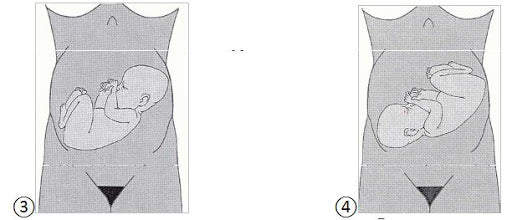
Intercostal pain how to sleep?
Rib pain can happen to anyone at any time for a variety of reasons. If you have suffered a sports injury, been in an accident, or are not entirely sure how the pain started, it is advisable to write down the symptoms you have had, including how long they lasted, and then take a appointment with your doctor.
After consulting your doctor and determining the cause, you are in charge of the cure. In most cases, there's not much you can do to speed up the process, which can leave you stuck and frustrated when it's time to sleep.
What can you do to sleep with rib pain? When trying to sleep with intercostal pain, comfort is key. There are several simple things you can do during your nighttime routine that will improve your quality of rest during the healing process.
Keep in mind that most rib injuries take approximately six weeks to heal, so you'll want to develop a nightly routine that will help you get through the process as painlessly as possible. The hours we sleep are the hours when our body restores and regenerates damaged tissues and cells. Sleep is essential for the proper functioning of our immune system because it is better able to produce the white blood cells necessary for the healing of our body.
Intercostal pain how to sleep with these simple tips
Take anti-inflammatory medications
Regardless of how you sustained your injury, there is likely to be some swelling contributing to your pain. Inflammation is your body's natural reaction to injury.
It alerts you that trauma has occurred in an area by increasing blood flow to it. It is also the beginning of the healing process. While this can be a good sign that you're headed in the right direction, the pain caused by inflammation can be enough to keep you awake and prevent you from achieving quality sleep.
The easiest and most effective way to combat discomfort is to take anti-inflammatory drugs such as aspirin or ibuprofen, which can be purchased over the counter. These will help to reduce pain and inflammation , allowing you to have a better chance of resting.
If you find that simply reducing inflammation doesn't really help when you're trying to fall asleep and stay asleep, look for anti-inflammatories that also contain antihistamines, which have soothing properties that help with sleep. These are considered a good option as a short-term solution if you have trouble falling asleep and could prove beneficial during your healing process.
Need another alternative to reduce inflammation and promote sleep? try snack on cherries or drink cherry juice before bedtime. Studies have shown that not only do they contain various compounds that help reduce inflammation, such as vitamin C, but they are also a good source of melatonin and tryptophan which help stimulate feelings of fatigue.
If the pain persists (or increases) for a few weeks, or if these suggestions don't seem to work for you, see your doctor for stronger prescription options.

Try a cold compress
Another way to reduce swelling and inflammation is to use ice or a cold compress. You can buy them from the store in gel form which is often reusable, but otherwise it's simple to make your own at home as most items in your freezer will work.
To make your homemade ice pack - place semi-crushed ice or a bag of frozen vegetables (like peas) in a zip lock bag, wrap the bag in a towel and apply to the injured area. Generally, cold compresses are most effective when used within the first 72 hours of injury for up to 20 minutes up to 3 times a day, but consult your doctor about what is advised for your situation.
Please note: Do not apply ice directly to your skin and make sure you do not fall asleep with the ice pack on your injury. Leaving an ice pack too long or placing ice directly on your skin can lead to frostbite, which also makes it difficult to fall asleep.
If the idea of ice cream already gives you chills, place a damp washcloth in the fridge for 20 minutes and gently press down before bedtime. The goal is to constrict the blood vessels in the area , returning the increased blood flow to normal.
Pain Relief Hot-Cold Compress

Use your pillows strategically
For rib injuries, there is no definitively correct position to sleep through the night. The main thing is to make sure you are comfortable and not prevent further injury. Once you find the position that works best for you, using pillows can help you stay there comfortably.
If you sleep on your back, that means a pillow under your head and a pillow on either side of your body. If you sleep on your side, this means a pillow under your head with one in the back and one in the chest, wrapping your legs around the front pillow. Surrounding yourself with cushions in this way provides support after falling asleep if your body tends to move or if you have a habit of tossing and turning. It will also prove to be a useful reminder when you're half asleep if you forget you're hurt in the first place!
Another short-term option that can help with discomfort is to sleep with a pillow suitable for intercostal pain. If you find that no number of pillows around you can provide enough comfort, consider getting this type of pillow to help relieve some of the pressure you feel in the area, as well as ease movement when trying to lie down or stand up.
Use compression during movement
At this point, even the smallest movements can interrupt your brief moments of comfort, and there's no way to get in or out of bed without feeling any pain. These moments happen very often, which means doing them with as little pain as possible is ideal.
Your rib injury probably feels slightly worse when there is mild pressure holding your ribs together, such as a cast or compression bandage.
Doctors advise against having this type of full-time compression due to the risk of causing additional damage.
To do this, grab each side of the shirt you're wearing and pull them towards the middle of your chest. Secure the sides firmly with one of your hands, keeping the material as tight as possible. Wear a shirt with less stretchy material if possible. You can then use your free hand to lower yourself onto your bed or slowly stand up. By using your shirt to keep your upper torso intact, you keep your rib cage stable and prevent movement when getting in or out of bed. It can also be used as a technique for sitting down or getting up from your couch.
Practice deep breathing
Because your lungs are housed in your ribs, the simple act of breathing can become quite a painful task. When you have a rib cage injury, what is usually an involuntary action is now very much the focus of your attention. Depending on your current level of pain, this may cause you to take shorter, more shallow breaths. Not only is this inadvisable from a respiratory point of view, but it also generates more tension in other parts of your body.
Throughout your healing process, it is necessary to continue to breathe deeply. This will help your ribs heal (as they still need to maintain movement and not become stiff), and may also promote a better night's sleep. Deep breathing will help you ground and relax, giving you a way to combat lingering feelings of pain using mental strength.
Breathing exercises can be a great way to promote regular breathing with a few deep, exhaled breaths, followed by a few normal breaths and repeating the process for several minutes. Doing these exercises before bed can help you relax and rest.
The final word
Whatever techniques you use, remember that the healing process will take time. Commit to giving your body the rest and comfort it needs to return to normal as soon as possible.


























